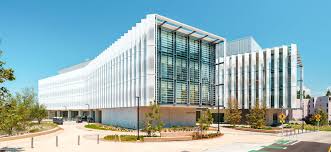
The International WELL Building Institute (IWBI), a leading organization promoting healthier buildings and communities worldwide, has reported a significant increase in the use of its joint certification pathway with LEED. In under two years, the total area of projects utilizing the combined WELL and LEED certification route has surged from 80 million to almost 250 million square feet.
The number of participating projects has also more than doubled, rising from 300 to over 750 across 47 countries. Additionally, over 100 projects—covering 15 million square feet—have successfully earned both certifications through this integrated process. This sharp rise demonstrates the growing global interest in a more efficient dual-certification approach.
This momentum follows the April 2023 collaboration between IWBI and the U.S. Green Building Council (USGBC), which introduced a simplified procedure for pursuing both the LEED green building rating system and the WELL Building Standard. The new process eases documentation requirements for projects aiming for both certifications simultaneously, or for those looking to add one after earning the other.
“We're thrilled to see the increasing global uptake of the LEED + WELL pathway, which highlights strong market momentum,” said Rachel Hodgdon, President and CEO of IWBI. “The heightened interest in achieving both certifications shows a growing awareness that the health of people and the planet are deeply interconnected. Combining WELL and LEED is a progressive step toward designing spaces that prioritize both.”
This announcement was made at the WELL 2025 Climate and Health Summit in Tokyo, a signature IWBI event held in collaboration with USGBC and Green Building Japan, focused on advancing health and sustainability in the built environment.
Peter Templeton, President and CEO of USGBC, added, “Aligning certification systems more closely is essential for supporting teams aiming to meet ambitious sustainability and wellness goals. We're encouraged by the growing global adoption of the LEED and WELL pathway, which simplifies the process for delivering high-performing buildings that benefit both people and the environment.”
Yasushi Kinoshita, Chair of Green Building Japan and a member of IWBI’s Governance Council, remarked, “This kind of leadership is exactly what’s needed. Seeing the industry embrace this dual approach to promoting health and sustainability is a positive sign for the future of our built spaces.”
The widespread adoption of the LEED+WELL pathway highlights a growing emphasis among industry leaders on combining WELL’s focus on occupant health with LEED’s emphasis on environmental performance—resulting in spaces that support both human and ecological well-being.
The number of participating projects has also more than doubled, rising from 300 to over 750 across 47 countries. Additionally, over 100 projects—covering 15 million square feet—have successfully earned both certifications through this integrated process. This sharp rise demonstrates the growing global interest in a more efficient dual-certification approach.
This momentum follows the April 2023 collaboration between IWBI and the U.S. Green Building Council (USGBC), which introduced a simplified procedure for pursuing both the LEED green building rating system and the WELL Building Standard. The new process eases documentation requirements for projects aiming for both certifications simultaneously, or for those looking to add one after earning the other.
“We're thrilled to see the increasing global uptake of the LEED + WELL pathway, which highlights strong market momentum,” said Rachel Hodgdon, President and CEO of IWBI. “The heightened interest in achieving both certifications shows a growing awareness that the health of people and the planet are deeply interconnected. Combining WELL and LEED is a progressive step toward designing spaces that prioritize both.”
This announcement was made at the WELL 2025 Climate and Health Summit in Tokyo, a signature IWBI event held in collaboration with USGBC and Green Building Japan, focused on advancing health and sustainability in the built environment.
Peter Templeton, President and CEO of USGBC, added, “Aligning certification systems more closely is essential for supporting teams aiming to meet ambitious sustainability and wellness goals. We're encouraged by the growing global adoption of the LEED and WELL pathway, which simplifies the process for delivering high-performing buildings that benefit both people and the environment.”
Yasushi Kinoshita, Chair of Green Building Japan and a member of IWBI’s Governance Council, remarked, “This kind of leadership is exactly what’s needed. Seeing the industry embrace this dual approach to promoting health and sustainability is a positive sign for the future of our built spaces.”
The widespread adoption of the LEED+WELL pathway highlights a growing emphasis among industry leaders on combining WELL’s focus on occupant health with LEED’s emphasis on environmental performance—resulting in spaces that support both human and ecological well-being.


 Global Surge in WELL LEED Certifications Highlights Demand for Healthy, Sustainable Buildings
Global Surge in WELL LEED Certifications Highlights Demand for Healthy, Sustainable Buildings




 Companies
Companies